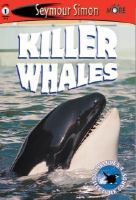1. BIBLIOGRAPHY
Lord, Cynthia. 2006. RULES. New York
2. PLOT SUMMARY
Like many other twelve-year olds, Catherine is struggling to fit in. However, her struggle runs a little deeper because she has a younger brother with autism, a family that revolves around him, a new neighbor to impress and a newly developed unique relationship with Jason, a young boy bound to a wheelchair. Through a list of rules she develops for her brother, Catherine also learns some valuable life lessons such as “some people think they know who you are, when really they don’t.”
3. CRITICAL ANALYSIS
As many teenage children struggle with finding their independent identity and role, Cynthia Lord provides an opportunity for young people to live vicariously through her main character, Catherine, as she struggles with the same problems. After all, can’t all older siblings remember being asked to watch after their younger siblings at some point? What about teenage children being embarrassed by a family member? How many teenagers have used the phrase “whatever” for annoying their mother? By incorporating these everyday issues, Catherine’s character is actually quite believable. The creative way Lord uses a rule as each chapter title contributes to the unique style of her writing. Readers will anticipate and connect with each new rule of life as the story unfolds.
4. REVIEW EXCERPT(S)
2007 Newberry Honor Book
Notable Children’s Book in the Language Arts (NCTE)
LIBRARY MEDIA CONNECTION review: “This is a great book to help students gain some understanding about autism, while also providing a good read. The author is the mother of an autistic child. Recommended."
BOOKLIST review: “A heartwarming first novel.”
SCHOOL LIBRARY JOURNAL review: "Catherine is an endearing narrator who tells her story with both humor and heartbreak. . . this sensitive story is about being different, feeling different, and finding acceptance. A lovely, warm read, and a great discussion starter."
5. CONNECTIONS
*Due to the topic/theme of this story, allow children time to participate in a book discussion. How can they relate to the main character Catherine? Why was Catherine stuck in the middle? What would you do if you were her? If willing, students may discuss a time when they had to make a difficult choice.
*Some children might have a strong connection to this story (i.e. family member or classmate with autism). If applicable, in a small group setting with similar students, students can discuss ways they can create bonds or build relationships with their family member or classmate.
*After reading, invite children to participate in creating a podcast which includes a booktalk for this story.
*Other contemporary realistic fiction books about children with autism:
Baskin, Nora Raleigh. ANYTHING BUT TYPICAL. ISBN 9781416963783
Bauer, Anne. WILD RIDE UP THE CUPBOARDS: A NOVEL. ISBN 0743269497
Heiman, Herb. RUNNING ON DREAMS. ISBN 1931282285





